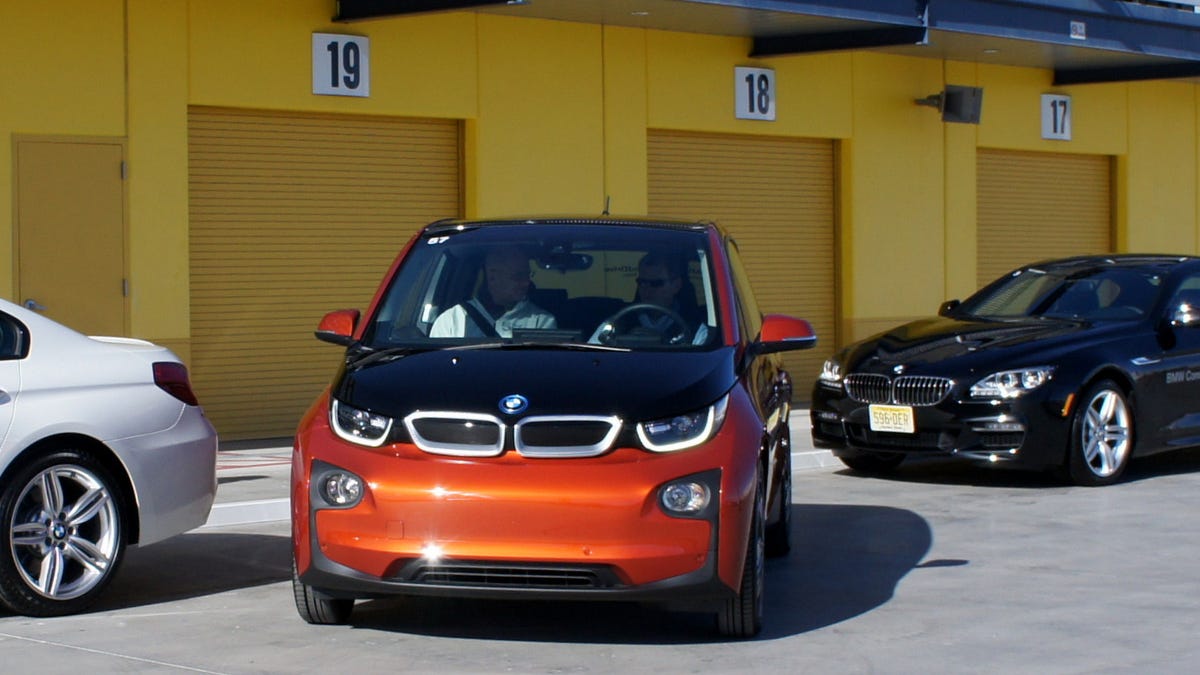BMW i3's push-button parallel parking
At CES 2014, BMW demonstrated one of its self-driving features: automated parallel parking at the push of a button.

LAS VEGAS -- BMW tends to do things its own way, which is the case with the new automated parallel parking system for the new i3. Unlike similar systems from other automakers, the driver of the i3 can keep hands off the wheel and feet off the pedals while the car parks itself.
During a demonstration at CES 2014, I sat in the driver's seat of the i3 electric car. BMW stationed a row of cars along a curb, with one relatively small space open for parallel parking. When I was ready to find a spot, I pressed a button on the car's console. The car's ultrasonic sensors scanned to right and left to look for a space.
After I passed the open spot, the car indicated on its main LCD that it found suitable parking, and advised me to put my foot on the brake. For the next step, I had to use the turn signal to indicate the side for the parking space, a nice feature to alert people behind me of my intentions.
Then I had merely to hold down the button on the console, take my hands off the wheel and lift my feet from the pedals, and the car reversed into the space. It backed up as much as it could, then jogged back and forth a little bit to align itself to the curb.
The result was perfect parallel parking with little effort on my part.
A BMW spokesperson told me the system can park in a space just 22 inches longer than the car itself. It can apparently park on hills just as easily as flat roads, the electric drivetrain allowing very precise acceleration.
However, BMW set up a nice, well-defined curb for the i3 to 'see' during this demonstration. The car might not perform as well in real-world conditions. It needs some kind of curb that its ultrasonic sensors can detect, so could not parallel park where there is no curb. It also would not sense a no-parking zone, so the driver will have to be judicious in deciding which spots to take.
Although BMW will launch this automated parallel parking feature as an option for the i3, a spokeperson told me it would roll out to other BMW models in the near future.

